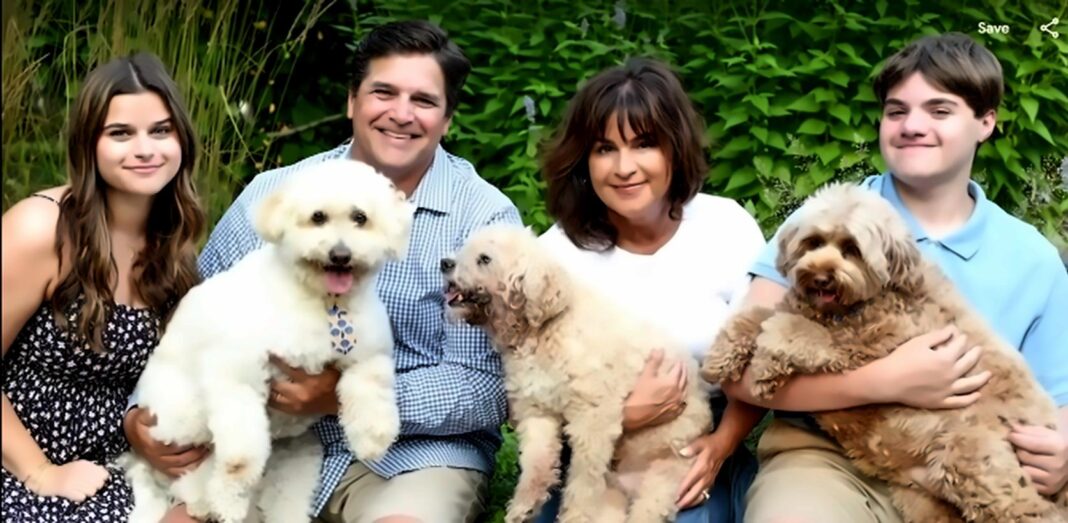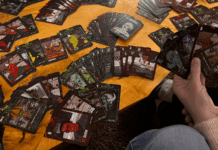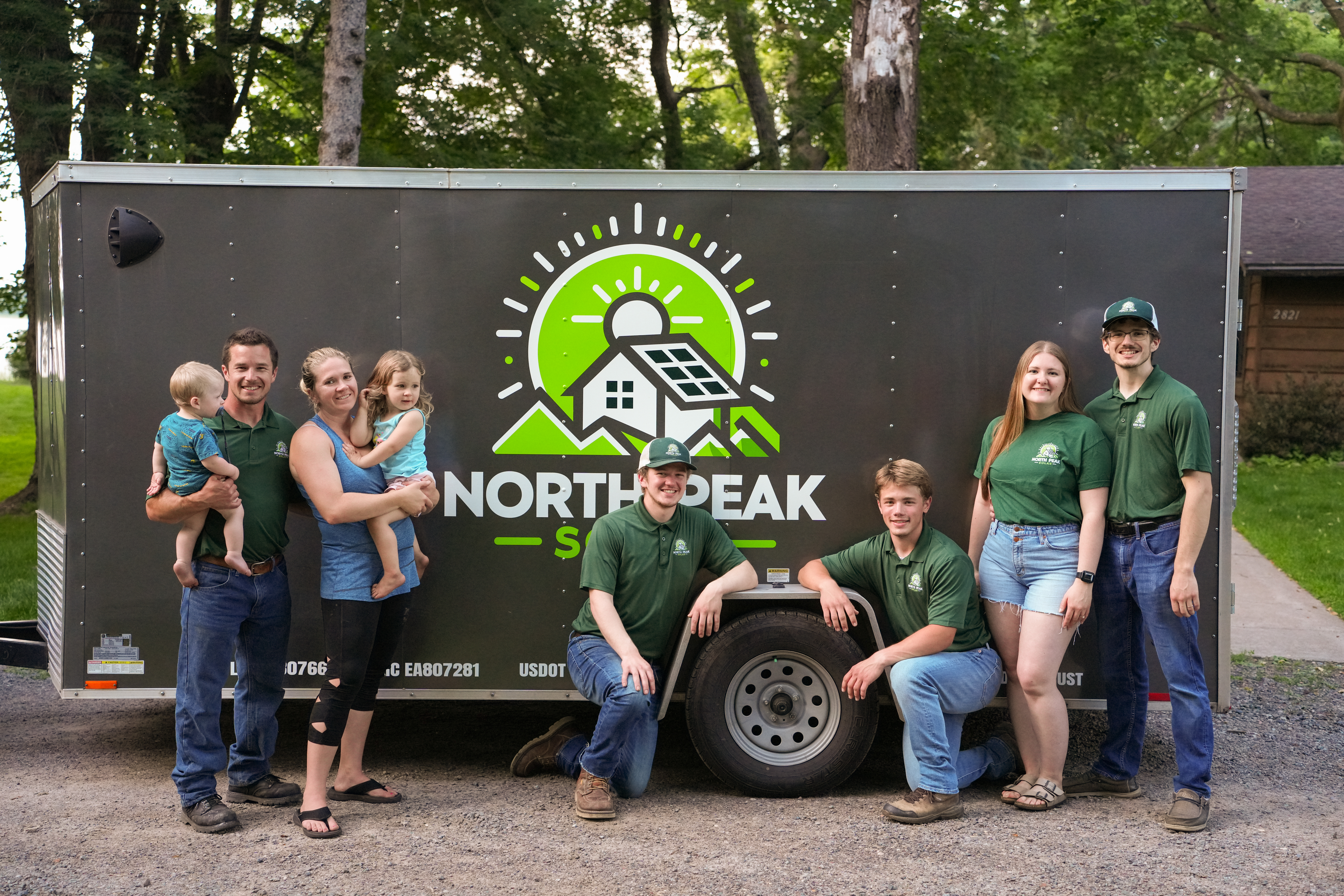Where were you born and where did you grow up?
I was born and raised in St. Cloud, Minnesota. I lived there for the first 18 years of my life. After high school, I started college at St. Cloud State University, but I wasn’t quite ready for it at the time.
Describe your time and service in the US Navy and what was your motivation for enlisting.
After my first semester of college, I realized I needed a change. I decided to join the U.S. Navy and enlisted in 1988. I served for four years aboard the USS America (CV-66), including deployment during the Gulf War. When Iraq invaded Kuwait, our ship’s deployment schedule accelerated dramatically. We transited the Suez Canal on January 16, 1991, and were on station providing combat air patrol on the first night of the Gulf War. I worked in supply, managing inventory and making sure we had what we needed to operate. The experience really helped me mature and taught me responsibility.
What do you do for fun with your family, and are you willing to share anything about your children or spouse?
I’ve been married to my wife Kimberly since 1998. We have two children—our daughter Catherine, who’s 21 and finishing her degree at the University of Wisconsin, and our son Nicholas, who’s 15 and a freshman at Orono. Hunting is a big family tradition for us. I go deer hunting with my brothers and now with Nicholas too. It’s a great way to spend time together, telling stories and just being out in the woods.
What do you do for fun as a hobby/passion project/etc.?
I love being outdoors. Hunting and fishing are my main hobbies. I hunt deer, turkey, duck, and grouse. Deer hunting especially is a family tradition. There’s something special about being in the woods all day and watching the natural world around you. I’ve always enjoyed science and nature—I even got my degree in aquatic biology.
What is your current day job and describe what the most challenging part is?
I work at the Federal Reserve Bank of Minneapolis in Federal Reserve Financial Services. My focus is on improving the efficiency of payment systems. That means working with businesses and banks to make sure their systems talk to each other more smoothly. There’s a lot of friction in how payments and accounting systems interact, and we look at how standards can help remove that friction. We’ve even looked at blockchain technologies, but our goal is to stay neutral and find ways to support interoperability across platforms.
Describe your history with the City of Medina, including your time on other commissions leading up to mayor and why you decided to run.
My family and I moved to Medina in 2011. I was drawn to the area for its rural feel, proximity to our jobs, and great schools. In 2013, a development project caught my attention and I started attending Planning Commission and City Council meetings. That sparked my interest in local government. I first ran for City Council but didn’t win. After that, I joined the Planning Commission in 2014, served for four years, and then was elected to City Council where I served another six years. When Kathy Martin decided to retire as mayor, she encouraged me to run. I wanted to continue the city’s vision—keeping taxes low, maintaining our rural character, and running an efficient operation.
What do you believe is the most important issue facing Medina residents in the next 2 years?
One of the big issues we’re facing is staff turnover, which means we could lose a lot of institutional knowledge. As Medina grows, it’s important to manage that growth without letting costs get out of control. The city’s share of the property tax bill is about 20 to 23 percent, and I want to make sure we keep that in check while still meeting residents’ needs. We already run a pretty lean operation, so we have to be very thoughtful about where we allocate resources.
What do you believe, if anything, is currently lacking in the City of Medina and do you have any plans to address it as mayor?
I think Medina is already running efficiently, but we always need to be aware of how we’re spending money. As the city grows and staffing needs increase, we’ll need to be strategic about hiring and budgeting. Maintaining the level of service our residents expect while keeping costs under control is the priority.
What is the most interesting place you’ve ever visited?
One of the most unique experiences I’ve had was marching in the Gulf War victory parade in New York City during Fleet Week in 1991. We’d just returned from deployment, and I got to march up Broadway with ticker tape falling from the buildings—it felt like stepping into a moment from history. Another memorable experience was meeting President George H.W. Bush when he visited our ship.
Who did you look up to as a child/young adult growing up?
I looked up to my dad. He didn’t go to college, but he worked his way up and became a part-owner of an auto parts distribution business in central Minnesota. He worked hard and taught me and my brothers strong values that I still carry with me today.
Is developing Uptown Hamel something you believe is possible over the course of the next 2-4 years?
It’s not a simple issue to address, especially since the city doesn’t actually control any of the property in Uptown Hamel. Ultimately, it’s the private sector that must take the initiative. Developers need to come forward, evaluate the area, and create plans to redevelop the individual parcels that make up the district. While campaigning for mayor, someone shared with me a Star Tribune article from 2004 that highlighted Uptown Hamel and detailed several steps the city had taken at the time to encourage growth and redevelopment. Many of the projects mentioned in that article did come to fruition, but since then, there hasn’t been any truly substantial development in the area.
That highlights a continued opportunity. As our community grows, we should revisit the zoning in Uptown Hamel to ensure it supports our vision for the future. One key way the city can actively address this is through our upcoming 2050 Comprehensive Plan update, which will take place within the next two years. This process gives us a timely and meaningful opportunity to take a hard look at the existing zoning in Uptown Hamel and make sure it aligns with the broader goals we’re setting for Medina. We want to create a vibrant, community-focused destination—a true crown jewel of the city—and that starts with ensuring our policies and zoning regulations enable that vision.
We’ve heard consistent feedback from residents over the years: people want a place to gather, to connect, and to enjoy community life. Uptown Hamel is arguably the best location for that. It already has strong anchors, like Hamel Park—with its baseball fields, sledding hill, and community center—and its central location makes it a natural hub. But there are also challenges we need to navigate. To the north, train tracks present a physical barrier to expansion, and to the south, the park limits further sprawl. That makes Uptown Hamel a compact, bounded area where every parcel counts—and where we need to be intentional about land use.
Through the comprehensive planning process, we’ll need to carefully evaluate issues like parking availability, height restrictions, and existing density limits within the zoning code. Addressing those constraints thoughtfully can help open the door for redevelopment that is both practical and visionary. And hopefully, as we lay that groundwork, developers will see the opportunity and step in to bring forward projects that help turn that shared vision into reality.
Do you have any thoughts on the rising property taxes and how they may be mitigated for residents and businesses in the years to come?
Over the last five years, property taxes—and more specifically, assessed property values—have increased substantially across our community. If you go back just three or four years, many homeowners in Hennepin County saw their assessed home values rise by 18 to 20 percent. While these increases don’t always translate directly to higher property taxes, they often do impact the amount residents are required to pay.
It’s important to understand that property taxes are determined by a complex formula. Your final tax bill is influenced by multiple entities: the city, the county, your school district, and potentially special taxing districts like watershed management organizations. Each of these entities contributes a portion to the total tax rate.
What the city can control is the city’s portion of your overall property tax assessment. And that’s where we focus our efforts—by managing our expenses responsibly, we can limit how much revenue we need to collect from residents. On average, the city’s share of a property owner’s total tax bill is about 21 to 23 percent, depending on which school district you’re in—since Medina is served by four different districts, rates can vary slightly across the city.
From a city standpoint, we remain committed to being fiscally disciplined. We continuously evaluate spending to ensure we’re providing essential services efficiently and without unnecessary burden to taxpayers. Looking ahead, the economic forecast suggests that property values are likely to stabilize. Current estimates through 2026 project increases of only around 2 to 3 percent annually, which should help ease some of the pressure residents have felt in recent years.
By staying proactive in managing our expenses, we aim to keep Medina financially affordable and sustainable place to live and do business.
Is there anything regarding the comp plan that you’d like the community to know more about?
The Comprehensive Plan—commonly referred to as the COMP Plan—is the city’s formal response to the Metropolitan Council’s regional planning framework. Every ten years, cities across the metro area, including Medina, are required to update their COMP Plans to reflect projected growth and development over a 10- to 20-year horizon. It’s one of the most important planning tools we have as a city, helping us determine where and when development should occur, and how to balance that growth in a way that aligns with our community’s values.
The COMP Plan guides not only land use and infrastructure but also housing, transportation, parks, and utilities. It plays a critical role in helping us strike a balance between residential and commercial development—ensuring we maintain a healthy and sustainable tax base to support essential services without overburdening our residents.
Looking ahead, the 2050 COMP Plan process will kick off in the next year or so. This is a major opportunity for residents to get involved and help shape the future of Medina. The city will host a series of public open houses and create working groups where citizens can actively participate, share ideas, and provide feedback. We’ll be inviting community members and leaders to step forward and join us in shaping this vision.
At the end of the day, this isn’t just a city project—it’s a community effort. It’s up to all of us, as residents of Medina, to help define what we want our city to look like in the years ahead. I encourage anyone who is passionate about our city’s future to raise their hand, get involved, and be a part of this important process. Your voice matters, and your input will help drive the future of Medina.
How would you suggest Medina residents could be more active in engaging with the City leadership to feel a part of their City’s representation?
I believe it’s really important for residents to engage with city leadership—not just with the City Council, but also with our city staff. Too often, the interactions we have with residents are tied to specific issues or transactional needs—like a permit request or a development proposal that comes before the Council. While those are important, they shouldn’t be the only points of contact.
I encourage residents to reach out more frequently—whether by email or phone—to share what’s on their minds regarding city-related matters. Most of our contact information is readily available on the city’s website, and we’re always open to hearing from you. These conversations don’t have to be formal or issue-driven; sometimes a simple conversation can offer valuable insight and connection.
Beyond digital communication, there are also informal opportunities to engage with city leadership. Whether it’s at a local event, a kids’ activity, or even running into someone around town, don’t hesitate to start a conversation. I’ve also been exploring some new ways to improve engagement and communication. As the city works to update its website, I’d like to see us incorporate more tools like a regular blog or “letter from the mayor” to keep residents informed about what’s happening around Medina.
Another idea I’ve been considering is hosting informal gatherings—like a “Coffee with the Mayor” at a local Caribou Coffee or Starbucks. It would be a relaxed, open-table setting where residents could stop by, share thoughts, ask questions, or just chat about what’s going on in the city. I think these types of events could help foster stronger connections and keep the lines of communication open between the community and its leadership.
Ultimately, it’s about building relationships and making sure residents feel heard, valued, and involved. That’s the kind of city we want to continue building together.







